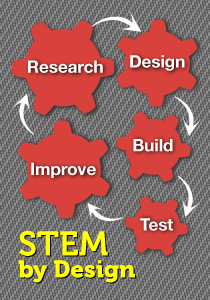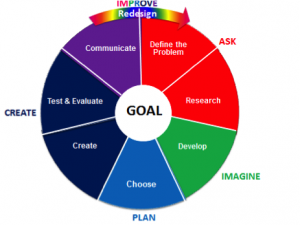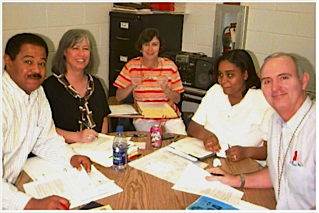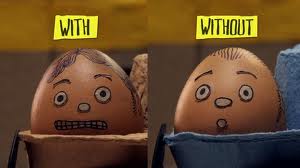12 Steps to Great STEM Lessons
A MiddleWeb Blog

Well, if I had one wish for education, I would wish for a miracle that I believe would have a powerful impact on student learning.

In many places, of course, teachers are already being asked to plan and implement STEM lessons. But so often these “requests” are accompanied by very little preparation, explanation, or time to work together. In a search for some kind of help, these teachers may look for STEM lessons online. That can be both a rewarding and frustrating experience. It’s rewarding because teachers will, in fact, find some engaging lessons out there. But it’s also frustrating because the lessons they find may have little to do with what they are teaching.
Maybe the process that a group of 8th grade teachers in Mobile, Alabama are using to design STEM lessons can help. Let’s give it a shot. (Keep in mind that the principles they are using would work equally well with other subjects.)
12 key steps to good STEM lesson building
1. Prepare the STEM lesson around a topic you will be teaching. Like these Mobile teachers, I’m guessing you don’t have time to get “off track” with regard to the curriculum pacing guide.
During the second quarter, 8th grade science students in Mobile will be studying physical and chemical changes, types of chemical reactions, and acids and bases. The student math objectives include computational fluency and solving linear equations. Sounded like a possible fit. Great! That allowed the teachers to blend some math and science content so kids can actually see how the two subjects interconnect.
2. Connect that topic to a real world problem. Easier said than done.These Mobile teachers stretched their thinking caps to arrive at a real world issue. They decided to explore the problem of airbags. A simple and safe chemical reaction takes place between acetic acid (vinegar) and sodium bicarbonate (baking soda). This produces a gas (carbon dioxide) that might be used to expand airbags. Voila!
3. Clearly define the STEM challenge students will tackle. The teachers tossed around ideas on how the air bag might be used: possibly as a cushion for elbows or knees if contact occurs during a sports activity; or possibly as a non-inflammatory automobile air bag. Here’s the draft challenge the teachers are working on now: Design a cost-effective airbag from nonflammable chemicals that will inflate quickly and prevent injury.
4. Decide what success looks like. This is still under construction, as the Mobile teachers discuss how teams might test the effectiveness of their air bag in preventing injury. Using a boiled egg as a passenger is a popular way of doing this. Exactly how will they conduct this investigation, and what measurements will they take? Those are questions teachers address next. Fortunately they have a good resource in Alicia Lane’s lesson plan on the Chemistry of Air Bags.

6. Help students identify the challenge. Do this in an engaging way. Set up a scenario that captures the students’ interest and lays out the problem. YouTube videos may come in handy. Use a skit or some other attention-getter. In the end, be sure the students understand their challenge and, indeed, feel challenged.
7. Involve students (in teams) in researching the content for the challenge. Note that teachers have an opportunity to teach content such as balancing chemical equations — that’s part of the curriculum. Keep in mind, however, that this student research can be hands-on research. It may involve learning about acid-base reactions by experimenting with the chemicals they will use. It can also include learning about air bags. This may involve reading or videos. Research doesn’t need to be just a “nose-in-a-book” process.
8. Encourage teams to develop their own ideas about how to solve the problem. Before you turn students loose to brainstorm ideas and solutions, you’ll want to establish some criteria and constraints. For example, one criterion might be that their air bag should be cost effective. Exactly how much of each chemical will they need to produce enough gas to fill the air bag (a plastic sandwich bag) to the optimal level? A constraint might be that they have only a certain amount of acetic acid and sodium bicarbonate to work with.
This is really important: Let students generate multiple ideas for solving their problem. One thing they need to learn is that there are usually multiple solutions for problems – not “one right answer.” This is the step that separates real STEM learning from cookie cutter lab experiments. After students get some ideas on the table, they can select one to try. (In this case, teams might muck around with the chemicals and come up with their own proportions for inflating the airbag. If students will be using a boiled egg in their investigation, they will need to engage in another round of brainstorming – how will they attach the passenger to the airbag? As they work together, monitor how their teamwork is going. Is everyone participating? Sharing? Respectful?)
9. Guide teams to choose one idea to test and then create their prototype. In this case they might select the airbag system they think has the most cost-effective ratio of chemicals and a device they think will best transport the passenger egg. Let them dive into building a prototype of their air bag system. (Again – watch to see that they’re working as a team.)
10. Facilitate the process of prototype testing and evaluation. Teams should test their prototypes and collect data on how well they worked. This may involve one test or many tests, depending on what kind of data they will collect. Then teams should analyze their data and decide how well their prototypes met the criteria.
11. Involve teams in communicating their findings. The teams might display their data and then make decisions as a whole class about which airbag system worked best and why.
12. Redesign if there’s time. Once teams have time to learn from one another, they can then redesign their airbag systems and improve them.
The key take-aways
I can’t conclude this overly-long post until I reiterate these important points to remember:
- Provide lots of guidance but few instructions.
- Mistakes and design failures are good methods of learning.
- The STEM process is not linear – the sequence of events may change.
- Students work in teams to solve STEM challenges.
- Work with colleagues if possible to write and implement STEM lessons. If it’s not possible, then go for it anyway!
Thanks for hanging in there, and happy lesson developing!
Genie image: Thomas Hawk, Creative Commons
































Anne, this is teriffic! Our school had “vertical teaming” in which subject alike teachers meet monthly during our district’s early release to share ideas. I’ve shared this with my principal, a former science teacher to share.
thanks so much,
Laurie
Thanks to you Laurie. I know that STEM folk are often struggling with a lot of issues as they try to implement genuine and meaningful STEM lessons, and to make this fit within their regular curriculum. I think our greatest hope is to share with one another – what’s working, and even what didn’t work. (What did not go right can be great source of learning.) So thanks for sharing, and please encourage your teachers to share any ideas and concerns they have.
Anne
I like how your ideas fit with constructivism and inquiry, two key aspects of my current study and dissertation. Thank you for a concise, but informative set of steps.
Linda
Glad you find them useful, Linda. Sounds as if your dissertation is going to be a real winner! Post a link when it’s available for reading. We somehow have to turn the focus from preparing kids to take tests to preparing them for inquiry and engagement with learning.
Anne, I am part of the science curriculum committee for the new 5th and 6th grade STEM building that is currently being built in our district (it will be up and running next year). Do you have any advice/insights/suggestions as our committee begins to develop curriculum for the up and coming school year?
Hi, Candice,
Congratulations on being on a cutting edge committee! I have a couple of suggestions that might help with the process.
1. Have a good grasp of STEM – what it is, why we need it, what current research says, and how it’s being used successfully in other systems. I have a site where I curate some STEM articles at http://www.scoop.it/t/stem-curriculum. Feel free to use that if it helps.
2, Build the curriculum around an engineering design process. The one I use is pictured in this post. You can Google “engineering design process” for other variations.
3. Plan to make student teamwork a normal part of the curriculum. (This takes time and persistence.) This may mean that you need to teach students how to work successfully in teams. Some cooperative learning techniques help with this. This pdf. may help as well. http://www.middleweb.com/wp-content/uploads/2012/08/7-Student-Teaming-Tips-MW.pdf.
4. Build lessons around a real life problem, and plan for students to work through the steps of finding solutions for several days.
5. Be sure STEM curriculum objectives are build with the science objectives (and math objectives) in mind. If you will be using the NGSS objectives when they are finalized, this will be easier.
6. Plan to field test and revise lessons and curriculum before finalizing it. Hope this helps!
Anyone else erecting buildings dedicated to STEM?! Love to hear more about how that comes about.
This is a great post as we are always looking for design cycle ideas for our integrated International Baccalaureate Science and Design Technology Course. Does anyone have ideas for a design cycle unit for astronomy? jsims@sandi.net
Dear Anne,
I appreciate you taking the time to post this article. I will be using the information to help me better prepare my lessons. I am classified as a Creative Thinking teacher, but I have been implementing STEM as much as possible- STEM is creative thinking.
I teach 8th graders and they can sometimes be difficult to motivate- it is like pulling a stubborn gray hair. :) But once I have them they really do become engaged.
A budget for supplies and materials has not been provided for me so I have been using my personal finances, this definitely puts a limit on material for activities.
If you have any ideas for STEM activates that are budget friendly I would love for you to share them with me.
I enjoy teaching STEM. I am going to step back, take a deep breath and follow your advice in the article.
It was nice article to read and get detail information about teaching using STEM. I will love to use it for my integrated lesson .
I’m so glad you found the article helpful, Charu. I have more tools and information (all free) on my book website if you’d like to check that out as well. http://www.stem-by-design.com.
Thanks for the key take-aways. Sometimes if something does not make sense we try to make it so instead of changing gears to learn something new that we may not have expected. These take-aways give the participants permission to do that.
Thanks for that observation, Rosemarie. Unexpected learning is the most relevant kind!
Thanks for this. I improved my scientific English. If you know just a little bit of English, you can understand this course is for everyone. I LOVE IT!
Good to hear from you, Brian. I’m glad you found it helpful.